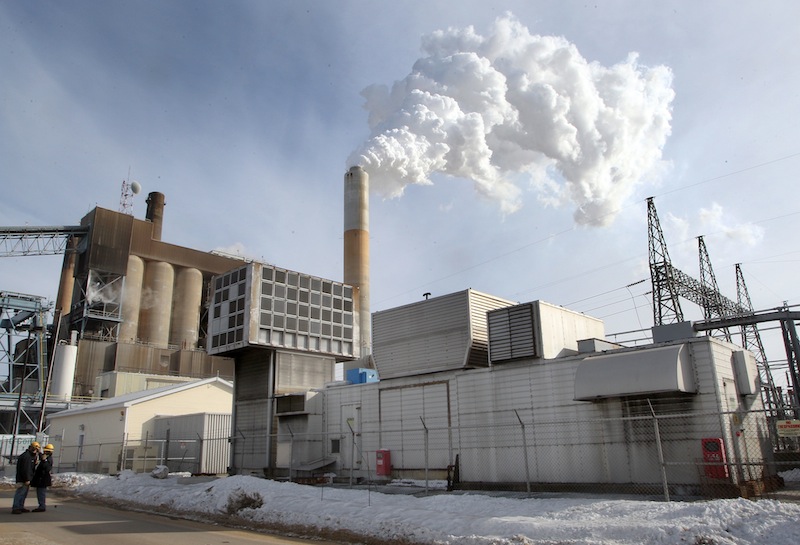WASHINGTON — Coming soon to mailboxes across the Midwest and the Eastern Seaboard: Big gas bills.
Utilities are warning homeowners about a double whammy – higher natural gas prices and consumption, both of which have been driven to five-year peaks by the arctic cold that has gripped much of the country in recent weeks.
Con Edison in New York estimated that the typical home-heating customer would see a gas bill this month of $388, which would be nearly 17 percent above last February. Older homes are much less energy-efficient and could run up even steeper bills.
Gas prices have soared during the past year, despite talk of fracking and a shale gas revolution that was supposed to provide enough supply to ensure stable prices, lure petrochemical jobs back from overseas, replace coal power plants and feed large, new export terminals.
The debate over whether the surge in prices is a blip or here to stay is a critical question, because expectations of low prices have seeped into key energy policy and corporate decisions. Does it make sense to build new gas-fired power plants? Or export gas? Or channel it into feedstock for petrochemical plants? Or to fuel truck fleets that now run on diesel?
Yet forecasting gas prices is a tricky business. Over the past year, prices jumped by two-thirds, closing last Friday at more than $6 per thousand cubic feet for March delivery. Then on Monday, a national weather forecast predicting mild temperatures in early March sent prices tumbling 11 percent.
In Maine, the Public Utilities Commission approved a 7.5 percent midwinter rate increase for the state’s largest supplier of natural gas, Unitil Corp. The company cited extreme cold and high demand in making the request, which will increase an average home customer’s total winter bill of $837 by about $63.
The new rate will run until April 30, when the heating season ends. It affects 19,350 home customers and 9,400 businesses, mainly in Greater Portland and the Lewiston-Auburn area. Business use varies greatly and big companies that buy gas from third-party suppliers aren’t affected.
Nationally, big businesses and consumer advocates have been arguing for some time that gas prices would climb if the Obama administration continues to give out permits for companies to start exporting, and the surge in prices is adding fuel to that argument.
“Americans are getting hit in the wallets by huge price spikes and supply shortages, but it will only get worse if we send more natural gas overseas to our global competitors,” said a statement from America’s Energy Advantage, an association of manufacturers such as Alcoa, Dow Chemical and Nucor. “It’s bad enough now, but this is an eerie foreshadowing of the crisis to come unless there is a change in course.”
Even analysts who are sanguine about the abundance of newly accessible shale gas are raising their price forecasts.
Citigroup’s commodities research group on Friday boosted its outlook for 2014 prices by 35 percent to a year-long average of $5 per thousand cubic feet. It cited the cold weather and the drought out West, which sapped hydropower capacity and boosted demand for gas-fired power in California and the Northwest.
High prices have persisted even after some electric utilities switched back from gas to coal.
Most analysts and gas production companies – as well as Citigroup’s analysts – say the winter surge in prices and consumption could inflict short-term pain on homeowners, but that it is not cause for long-term alarm.
“January was the 10th coldest on record, not just a spot of cold,” said Erica Bowman, chief economist of America’s Natural Gas Alliance, a group of gas producers. “On Jan. 7, we saw the highest withdrawal from storage – 137 billion cubic feet – ever. And we still see prices $6 or less. I would say that’s a pretty good sign of how robust the system is.”
With prices high again, companies might ramp up drilling and production. That will help reel in price increases, analysts say. And Bowman, of America’s Natural Gas Alliance, notes that gas producers are drilling more effectively and quickly, cutting the time needed to complete a well from 17 to six days.
“If the price is at $6 or even $5, we will see a big increase in production, and that’s going to crush prices again,” Bowman said.
Send questions/comments to the editors.



Success. Please wait for the page to reload. If the page does not reload within 5 seconds, please refresh the page.
Enter your email and password to access comments.
Hi, to comment on stories you must . This profile is in addition to your subscription and website login.
Already have a commenting profile? .
Invalid username/password.
Please check your email to confirm and complete your registration.
Only subscribers are eligible to post comments. Please subscribe or login first for digital access. Here’s why.
Use the form below to reset your password. When you've submitted your account email, we will send an email with a reset code.